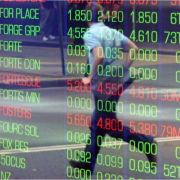Safeguarding against a correction
| Summary: Some stockmarket measurement indicators point to our market heading into a correction phase, although it’s never possible to predict the market’s next move. The best form of protection for investors is to follow the trends, with an eye to exiting if the stocks falls below its longer-term price trend line. |
| Key take-out: Slow trend-trading has been shown to enhance stockmarket returns by reducing downside risk. The simplest and easiest way to safeguard against a market crash is to use an ETF (one which invests in the most important listed companies in Australia) for your sharemarket exposure, and then buy or sell when the fund moves above or below its moving average trend-line. |
Key beneficiaries: General investors. Category: Investment strategy. |
Investment guru Warren Buffett once said there are two rules to investing: Rule 1 is not to lose money. Rule 2 is to never forget Rule 1.
When in or near retirement, protecting your capital is important, especially if you have a large exposure to the sharemarket.
A Rice Warner survey of 320 retired SMSF trustees conducted in October 2013 found that nine out of 10 were concerned about investment risk, with their main worry being a big market or economic downturn. The experience of the global financial crisis of 2008 still haunted them.
Slow trend-trading has been shown to enhance stockmarket returns by reducing downside risk. Indeed, conservative trend-trading of a single exchange traded fund (involving only one or two trades a year) might sound boring, but it’s more profitable than trading shares frequently and safer than taking a ‘set and forget’ approach to share funds.
The simplest and easiest way to safeguard against a market crash is to use an ETF (one which invests in the most important listed companies in Australia) for your sharemarket exposure, and then chart a 500-day moving average trend-line of that ETF’s daily unit price.
Whenever the ETF’s price is above its 500-day (red) trend line buy and hold the fund, and whenever it falls below that line sell the fund and stay in cash until it moves above its long-term trend again. Trading an ETF is as easy as buying and selling a share.
Personally I prefer trend-trading using (a) a multiple moving average (e.g. a 50/250-day moving average crossover) to establish buy and sell signals for an ETF, and (b) momentum oscillators to show when the stockmarket has passed its peak or trough.
Using such a combination of trend and momentum indicators reduces false trade signals and allows quicker exit in a market downturn and earlier entry in an upturn.
It’s not possible to know when a market has topped, but it is possible to gauge ‘excessive exuberance’, the most common trait before a crash.
I prefer to check whether the Australian All Ordinaries Index has got too far ahead of its long-term trend, which can be done using a bull market indicator such as the KST (know sure thing) index.
The KST indicator helps identify major stockmarket cycle junctures using a formula that is weighted to be more greatly influenced by longer and more dominant time spans.
As the following chart shows, whenever the KST’s value has exceeded 15, it is necessary to use a shorter trend line (such as a 250 rather than a 500-day moving average) to ensure an early exit from a market crash.
In 1987 when the KST got above 60 (suggesting not just ‘excessive’, but also ‘irrational’ investor exuberance) switching to an active market timing mode (such as a 50-day moving average) would have avoided the flash crash that became known as Black Tuesday. Observe, however, that whenever the KST was below 15, the 500-day moving average (blue) trend line was usually close enough to the All Ords index to trigger an early escape from a crash.
Here is a close up of the above chart for the last few years.
This year is only the sixth time since the creation of the All Ords index that the KST has pierced its “excessive exuberance” warning level of 15. On two of the other occasions (1983 and 2004) the market subsequently enjoyed prolonged bull runs, though each ended in horrific crashes exceeding 50%.
On two other occasions (1993 and 2011) the market shortly afterwards experienced crashes exceeding 20%, and on one occasion (1997) it had a correction of over 10%. In each case it warranted moving to a tighter stop loss limit (such as a shorter moving average support line) to minimise the downside risk.
So what can you do now? If you are using a crude 500-day moving average to gauge whether the market is above its very long-term trend line it would be prudent to move to a 250-day one instead.
If you don’t adopt an emergency evacuation plan, then hope for the best (i.e. another long bull run like the mid-1980s or the mid-2000s). But brace for the worst (an early correction or crash). I am firmly buckled into my trend-tracking ejector seat with a parachute, since I dread hard landings.
Percy Allan is a director of MarketTiming.com.au For a free three week trial of its newsletter and trend-trading strategies for listed ETF funds, see www.markettiming.com.au.
















